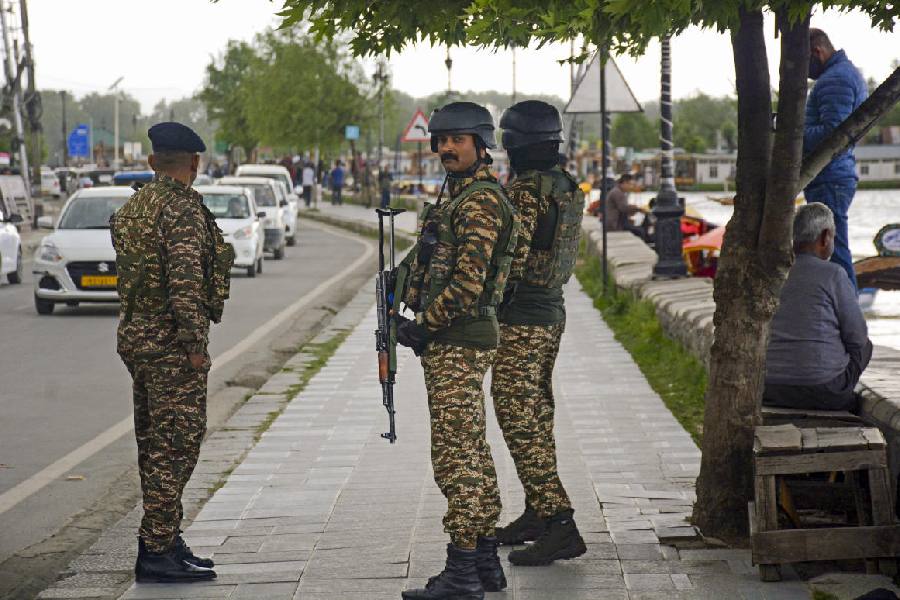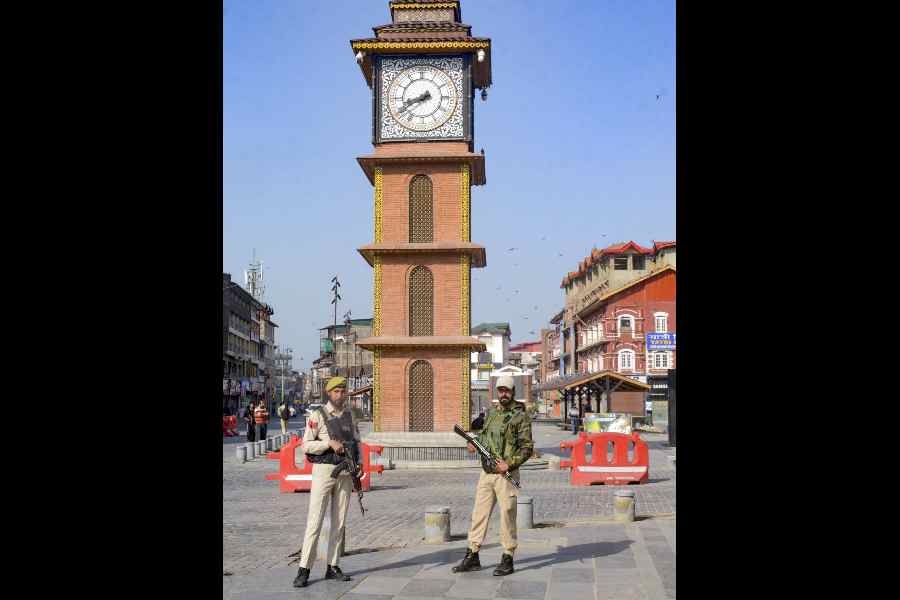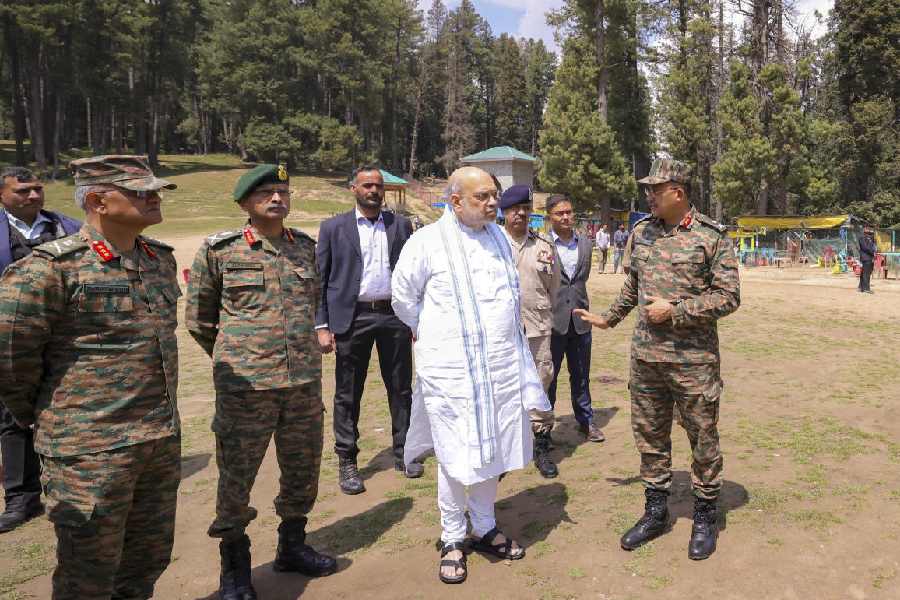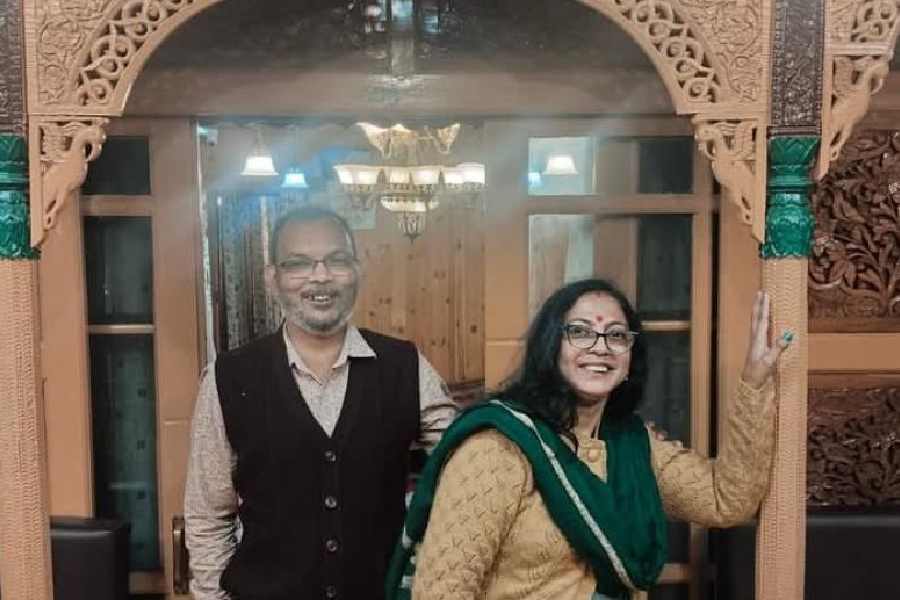 |
 |
| Rajesh sketches busily in his room.(Below) One of Rajesh’s works.Picture by Sanat Sinha |
Calcutta, Sept. 4: Dharmanagar is a tiny muffossil town in Tripura close to the Bangladesh border where refugees had settled down after the Partition and post-1971 as well. Rajesh Deb, the 30-year-old artist whose exhibition of woodcuts in colour on canvas is on at Gallery Rasa in New Alipore, Calcutta, is from this town. His parents, originally from Comilla in Bangladesh, had moved in after the Partition. Sitting in his tiny flat on Tobin Road here, close to what was once the stable of the Bengal Immunity, which closed down years ago, Deb says Dharmanagar is a town of small, mostly double-storey houses miles away from Agartala.
The world of art and culture was a distant reality for him, and his only link with it was the Bengali magazine Desh. In its pages on the arts he discovered a treasure trove of pictures. Beyond that, Deb did nothing to refine his aesthetic sensibility either by practising drawing or reading books on art. He was far too wayward for that, says the shy, gangly young man who looks far too meek to be capable of any violent activity.
Deb, however, says that he was such a habitual trouble-maker that after he passed his Madhyamik examinations his father gave him up in despair. He was sent to Agartala to his father’s friend who owned a studio where, as the name suggests, photographs were taken. “My father’s friend got me admitted to Agartala Art College as the session was on, but I did not last more than 15 days there. Thereafter, I reached Calcutta, via Dharmanagar, and since admissions were on at Rabindra Bharati University, I joined the institution.”
Deb says he was told to make a pencil sketch of a mela. “That was the first time I drew anything at all,” says the artist, whose drawings have a lot of muscle.
Deb admits that even in college he had made quite a name as one of those rare students who dared to challenge political interference, often leading to fights. But the then dean of faculty, Partha Pratim Deb, was his guardian angel, who, along with Adip Dutta, a young teacher, taught him how to wield satire and humour as mediums of expression.
Deb discovered the blockmakers and woodcuts of Battala, Kalighat and Garanhata in Chitpur, Calcutta, through the dissertation of a fellow student and books on the same by Sripantha and Asit Paul. He felt that though these prints were of 19th century vintage they still have relevance to contemporary Calcutta. He appropriated forms and images from the old woodcuts, juxtaposing them with text that immediately linked them with our times. His woodcuts were outstandingly large, unlike the 19th century variety. This time, he has taken out single edition prints on canvas, working from his box-like living room that is stacked with the sheets of plywood on which he engraves images in reverse with gouges, gravers and chisels — the matrix, that is.
These images are satirical sketches showing typical Bengali profligates and their mistresses, and babus who mindlessly aped the British. Hindu myths and legends, too, were an inexhaustible source of ideas and images. Some woodcuts, like the one of the Rabindranath Tagore industry, in which he appropriates images from Tagore and other contemporary satirists, do not miss their mark. But others tend to look flat, although his grotesques are always powerful. Deb says he is a bit tired of 19th century himself and would like to branch off in a different direction. But he wonders if his viewers will readily accept that.










